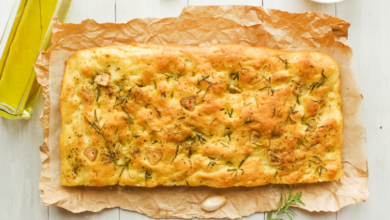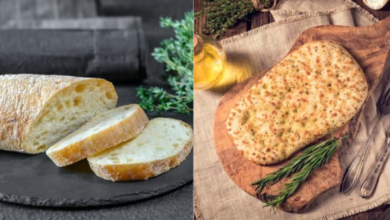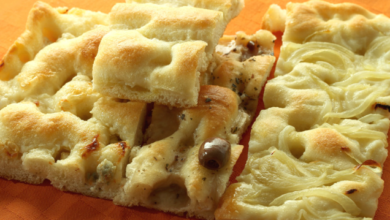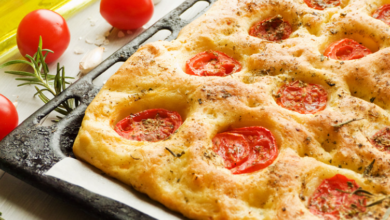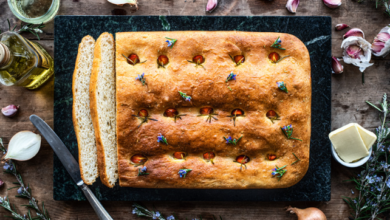Is Focaccia Hard Or Easy To Make? Here’s The Truth!
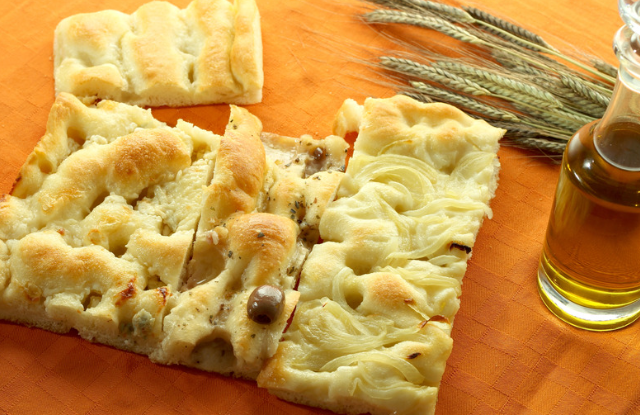
What To Know
- Allowing the dough to ferment for too long can result in an overly sour bread, while under-fermentation can lead to a heavy, undercooked loaf.
- The answer to whether focaccia is hard to make is subjective and depends on the baker’s experience and expectations.
- Ultimately, the ease or difficulty of focaccia making depends on the baker’s skill level, the desired outcome, and the willingness to experiment and learn.
Focaccia, with its golden-brown crust and pillowy interior, is a tantalizing bread that has captivated culinary enthusiasts for centuries. However, the question of whether it’s an easy or hard bread to make has sparked endless debates among home bakers. In this comprehensive guide, we delve into the complexities of focaccia making, exploring its techniques, challenges, and ultimately answering the burning question: is focaccia easy or hard to make?
The Art of Focaccia
Focaccia is a flatbread characterized by its dimpled surface, moist crumb, and irresistible flavor. Its origins can be traced back to ancient Rome, where it was a staple food among the populace. The dough is typically made with a combination of flour, water, yeast, salt, and olive oil, and it’s often topped with herbs, olives, or vegetables.
Is Focaccia Easy to Make?
The ease of making focaccia depends on several factors, including the baker’s skill level, the recipe used, and the available equipment.
For Beginners
For novice bakers, focaccia can be a relatively straightforward bread to make. The dough is forgiving and doesn’t require extensive kneading or shaping. With a simple recipe and clear instructions, beginners can achieve satisfying results.
For Experienced Bakers
Experienced bakers may find focaccia to be a more challenging endeavor. Achieving the perfect crust and crumb texture requires careful attention to fermentation, hydration, and baking techniques. Additionally, experimenting with different toppings and flavor combinations can add complexity to the process.
The Challenges of Focaccia Making
Despite its apparent simplicity, focaccia can present several challenges for home bakers.
Hydration
The hydration level of the dough is crucial for focaccia’s texture. Too much water can result in a sticky, difficult-to-handle dough, while too little water can produce a dense, dry bread. Finding the optimal hydration level requires practice and experience.
Fermentation
The fermentation process is essential for developing focaccia’s flavor and texture. Allowing the dough to ferment for too long can result in an overly sour bread, while under-fermentation can lead to a heavy, undercooked loaf.
Shaping
Unlike other breads that require intricate shaping, focaccia is typically stretched or patted into a flat shape. However, achieving an even thickness and dimpled surface can be challenging, especially for beginners.
Baking
Baking focaccia requires precise temperature control and careful monitoring. The bread should be baked until the crust is golden-brown and the interior is cooked through without overcooking.
Tips for Making Focaccia
To increase your chances of focaccia success, consider the following tips:
Use a high-quality flour.
Allow the dough to ferment slowly in the refrigerator.
Stretch or pat the dough gently to avoid tearing.
Preheat the oven and baking stone thoroughly.
Monitor the focaccia closely during baking.
Let the bread cool completely before slicing.
Is Focaccia Hard to Make?
The answer to whether focaccia is hard to make is subjective and depends on the baker’s experience and expectations. For beginners, it can be a relatively easy bread to make, especially with a simple recipe and guidance. However, for experienced bakers seeking to master the art of focaccia, it can be a challenging but rewarding endeavor.
Beyond the Basics: Enhancing Your Focaccia
Once you’ve mastered the basics of focaccia making, you can experiment with different toppings and flavor combinations to create unique and delicious variations.
Classic Toppings
Traditionally, focaccia is topped with herbs such as rosemary, thyme, or oregano. Olives, sun-dried tomatoes, and roasted peppers are also popular additions.
Creative Toppings
For a more adventurous twist, consider topping your focaccia with caramelized onions, goat cheese, or even fruit such as figs or grapes.
Flavorful Dough
In addition to toppings, you can also experiment with the flavor of the dough itself. Adding herbs, spices, or even grated cheese to the dough can create a unique and flavorful base for your focaccia.
The Verdict: Is Focaccia Easy or Hard to Make?
Whether focaccia is easy or hard to make is a matter of perspective. For beginners, it can be an approachable bread with simple techniques and forgiving dough. However, for experienced bakers seeking to perfect their craft, it can be a challenging but rewarding endeavor. Ultimately, the ease or difficulty of focaccia making depends on the baker’s skill level, the desired outcome, and the willingness to experiment and learn.
Common Questions and Answers
How long does it take to make focaccia?
The total time for making focaccia depends on the fermentation time, which can vary from a few hours to overnight. Including preparation, shaping, and baking, you can expect to spend around 4-6 hours on average.
What is the best flour to use for focaccia?
High-protein bread flour is the best choice for focaccia as it provides a strong gluten structure and chewy texture. However, all-purpose flour can also be used with slightly different results.
How can I prevent my focaccia from burning?
To prevent burning, preheat the oven and baking stone thoroughly and monitor the focaccia closely during baking. If the edges start to brown too quickly, cover them with foil or reduce the oven temperature.

